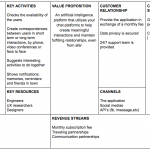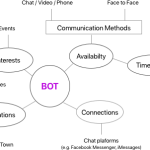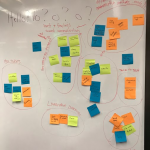Global Service Design Challenge
User Research, Service Blueprinting, Business Model Canvas, Rapid Prototyping, Wireframing
Overview
In a weekend design hackathon, participants were put into groups and challenged to engage with an intentionally open-ended prompt: Hello-o-o?
The Problem
The prompt could be approached in countless ways, and our team members were strangers just moments ago. How might we work together to identify a service that is desirable, feasible, and viable to present back to the entire room of participants within the time constraint of just two short days?







Process
My team brainstormed research questions relevant to the theme of human communication, conducted a series of street interviews to collect data, made observations, and synthesized recurrent themes in our transcript through which several key insights emerged:
- Increasing geographic mobility has led to more long distance relationships, including among those that are commonly those we most desire to be close to: partners, families, and friends
- Too many communication platforms and too little free time each day
- Difficulty communication resulting in less frequent, longer, and less natural interactions
- A prevalent sense of isolation, lack of connection
- Lack of synchrony due to time zones, not knowing others’ availability, fluctuating receptivity to engagement
The Solution
Our impact vision was an artificial intelligence service that integrates chat platforms to facilitate meaningful interactions despite geographic distance. The interface we imagined would be simple, clean and intuitive to minimize the amount of time users waste doom scrolling, clicking, and liking on other platforms, supposedly designed to incite connection. The unique selling proposition of our service was that it allows user to seamlessly connect on a deeper level with those they care about most, without the frenzy and frustration of other current social communication platforms.
Outcomes
At the end of the weekend, our team presented our service to a large group with resounding interest and enthusiasm! Ever since, I’ve become increasingly interested in the effects of present-day technology on consumers and have become an advocate for intentional, humane technology design for good.